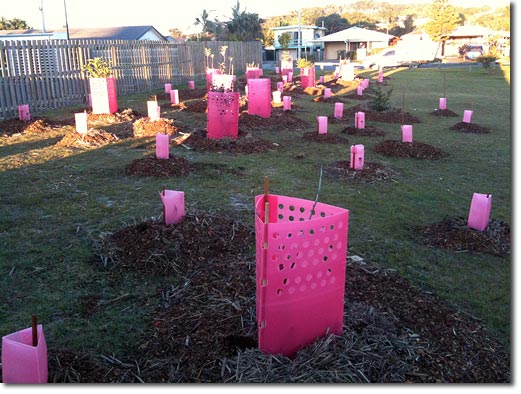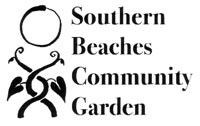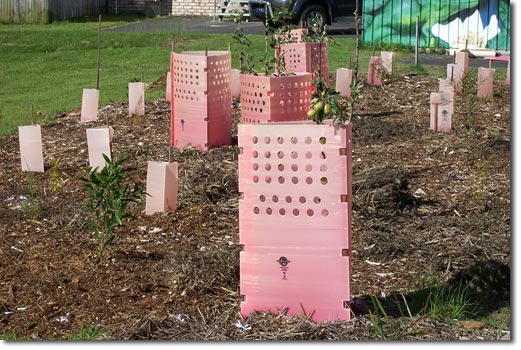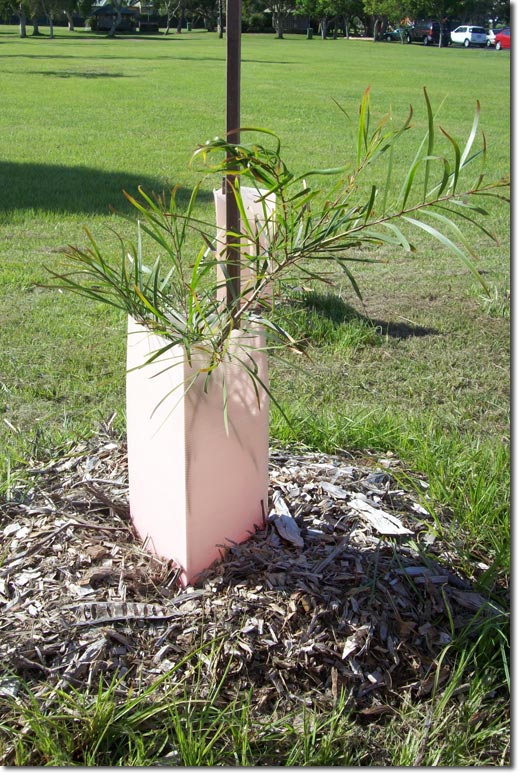


|
Commenced:
|
01/12/2009 |
|---|---|
|
Submitted:
|
06/02/2011 |
|
Last updated:
|
07/10/2015 |
|
Location:
|
Tugun Street , Tugun, Queensland, AU |
|
Phone:
|
0417010965 |
|
Website:
|
www.gcparks.com.au/activities.aspx?page=159 |
|
Climate zone:
|
Sub-tropical |
(projects i'm involved in)
Back to Southern Beaches Community Garden
Project: Southern Beaches Community Garden
Posted by Nick Huggins almost 14 years ago
A footnote on the progress of the Southern Beaches Community Garden at Tugun in south east Queensland, Australia. Our last planting of the food forest was held on the 4th August 2010. Since then we have had a very wet winter and spring this year in the lead up to the wet season in Queensland. So our food forest in now on its own and thriving. I’m putting the success down to the planting methodology shared by a good friend and college of mine, Matt Kilby from www.globallandrepair.com.au. Matt has been researching and refining this methodology over many years. It’s not what you plant but how you plant it. And in my own experience over the years in the Landscape industry, where we must have planted hundreds of thousands of tube stock trees over 12 years, we could only manage an 85% strike rate on mass plant outs. The approach that Matt Kilby has been mastering looks at preparation as one of the keys to mastering tree planting and the high survival rates, as well as biological planting methods used. At the community garden we didn’t have the chance to get much preparation done, like deep ripping on contour with a Yeomans Keyline Plow 12 months before planting. Instead we had to look and really concentrating on the soil (or sand in our case) and what we could do to improve it and what biological methods could we look at. Below I have listed the steps that Southern Beaches Community Garden adapted from Matt’s methodology to produce these successful results: Step 1: Compost was sourced from a local permaculturist and added to the tree hole that was dug 3x the size of the tree’s pot that was going in the hole — wide and deep to allow good root penetration and development. Step 2: We then added Tree Starter. Tree Starter uses a three-pronged support system for soil biology. Firstly, it supplies a wide range of food sources for soil life including humates, kelp (seaweed) and compost. Secondly, it retains moisture and provides a home-base for beneficial organisms through the inclusion of zeolite and rock minerals. Finally, highly paramagnetic materials are included into the formula to stimulate microbial proliferation. In addition to this trio of benefits, the compost component also inoculates a new workforce of beneficial microbes into the soil to get the trees jumping out of the ground. Step 3: We flood-irrigated the tubes and fruit trees to remove all the hot air from the roots. In the water we added Tree Tonic. During transplanting trees often suffer from transplant shock. This is due to root damage and a change of environment during the transplanting process. Tree Tonic lessens the impact of transplant shock by providing essential nutrients and to reverse the negative effects of transplanting and helps the plant to recover and increase growth rates. One thing I must say is that these plants started their life the conventional chemical way, so this biological treat must have seemed like paradise to them. Step 4: We added something which I think is very special. Tree specific mycorrhiza fungi. Mycorrhizas are fungi that live in a beneficial relationship with most tree roots. Mycorrhiza increase the tree roots’ access to water and nutrients and therefore increases tree growth, especially in poor soil conditions which are often found in tree planting areas. And that was more the case in our sand pit of a garden. Just as we apply starter fertiliser when young trees are planted we also need to consider inoculating with mycorrhiza to enhance survival rates. Most soils in Australia are becoming more and more devoid of mycorrhiza due to tillage, chemicals, compaction and loss of organic matter, making small trees very susceptible to drought and nutrients shortages. If we can inoculate the tube stock with mycorrhiza we can limit these stresses and survival/growth rates will increase — as demonstrated now in our food forest trees. Step 5: Back to the hole preparation and the finishing off or landscaping the earth around the tree. A bull horn swale, a technique that Matt always uses, places the tree in a dish below ground level with small swales to focus the water into the tree. This is another of the keys to this methodology, giving the tree every chance it can to thrive rather that just survive. Step 6: We used recycled paper Eco Mulch Mats, specially designed for this type of work, and the thing for our gardeners was that the Eco Mulch Mats would last for 12 – 18 months and is the equivalent to 100mm of mulch. Also, they are organic certified and contain organic fertiliser. The mats deliver sustained nutrient release including essential trace elements as the mat naturally biodegrades. We also placed 300mm deep of mulch around the outside of the tree guard 1m around the tree. Step 7: Our Garden members all laughed at me when we got to step seven: pink tree guards. That right folks, pink. Now I have been working and trialing these tree guards for some time now, and I’m a believer. The theory is that visible light can be split into a spectrum of colours. Green leaves absorb light from the red fraction to drive photosynthesis. Research has demonstrated that the colour pink reflects and focuses the red fraction, concentrating this photosynthetic energy to enhance plant growth. The guards at our community garden location have also provided wind protection against strong salt-laden wind, which can cause severe dehydration of young trees and can result in high losses and salt burn. The Plant Pink Tree Guards have given our food forest ideal protection from strong winds in this early stage of growth and also creating an environment of increased humidity and sun protection. The guards have also stopped predation from hares, rabbits and wallabies. Step 8: 10 – 20 liters of water per tree with Tree Tonic. And then we left it to Gaia to look after…. So, three months on and the tube stock have bounded out of the ground. Some have a vertical growth of more than half a meter with good lateral growth. In the past 12 months I have been planting trees in some extreme climates around Australia and still this method wins hands down. Matt is an open source and would be more than happy to share this information with you. See his website for more details or print outs of the methodology. As for the community garden. We are in maintenance mode and have just planted more support species and ground covers like sweet potato and pinto peanut. If you have the chance to test this tree planting methodology, please keep us updated on how it goes.
The Methodology of Tree Planting
Community Projects, Food Forests, Food Plants - Perennial, Nurseries & Propogation, Plant Systems, Trees, Water Harvesting — by Nick Huggins November 20, 2010

Just after planting All up, out of the 50 support species and 12 fruit trees we plant, we have had a 99% strike rate for the trees surviving. We lost only one of the support trees and the garden has had 0% vandalism. To give you an idea of the tuff location the garden is in, it lies 150m from the beach, 300m to Coolangatta International airport runway (must say it’s nice to watch the planes come in) and 50m to a skateboard park for which most people thought would be the biggest battle since we elected not to put up a 2m chain wire fence surrounding the garden site and padlock on the gate for which quite a few of the community gardens are doing on the Gold Coast.
All up, out of the 50 support species and 12 fruit trees we plant, we have had a 99% strike rate for the trees surviving. We lost only one of the support trees and the garden has had 0% vandalism. To give you an idea of the tuff location the garden is in, it lies 150m from the beach, 300m to Coolangatta International airport runway (must say it’s nice to watch the planes come in) and 50m to a skateboard park for which most people thought would be the biggest battle since we elected not to put up a 2m chain wire fence surrounding the garden site and padlock on the gate for which quite a few of the community gardens are doing on the Gold Coast.
Support species taken out of the guards and left to grow on their own
Showing how much growth has been achieved in the 3 months with the guards
You must be logged in to comment.


Note: The various badges displayed in people profiles are largely honesty-based self-proclamations by the individuals themselves. There are reporting functions users can use if they know of blatant misrepresentation (for both people and projects). Legitimacy, competency and reputation for all people and projects can be evidenced and/or developed through their providing regular updates on permaculture work they’re involved in, before/after photographs, etc. A spirit of objective nurturing of both people and projects through knowledge/encouragement/inspiration/resource sharing is the aim of the Worldwide Permaculture Network.
 |
MemberA member is a permaculturist who has never taken a PDC course. These cannot become PDC teachers. Members may be novice or highly experienced permaculturists or anywhere in between. Watch their updates for evaluation. |
|---|---|
  |
Permaculture MatchmakerOne of these badges will show if you select your gender and the "I'm single, looking for a permaculture partner" option in your profile. |
 |
PDCPeople who claim to have taken a Permaculture Design Certificate (PDC) course somewhere in the world. |
 |
PDC VerifiedPeople who have entered an email address for the teacher of their PDC course, and have had their PDC status verified by that teacher. Watch their updates for evaluation. |
 |
PRI PDCPeople who’ve taken a Permaculture Research Institute PDC somewhere in the world. |
 |
PDC TeacherPeople who claim to teach some version of PDC somewhere in the world. |
 |
PRI TeacherWith the exception of the ‘Member’ who has never taken a PDC, all of the above can apply to become a PRI PDC Teacher. PRI PDC Teachers are those who the PRI recognise, through a vetting board, as determined and competent to teach the full 72-hour course as developed by Permaculture founder Bill Mollison – covering all the topics of The Designers’ Manual as well as possible (i.e. not cherry picking only aspects the teacher feels most interested or competent in). Such teachers also commit to focussing on the design science, and not including subjective spiritual/metaphysical elements. The reason these items are not included in the PDC curriculum is because they are “belief” based. Permaculture Design education concerns itself with teaching good design based on strategies and techniques which are scientifically provable. PRI PDC Teachers may be given teaching and/or consultancy offerings as they become available as the network grows. |
 |
Aid WorkerThe individual with this badge is indicating they are, have, or would like to be involved in permaculture aid work. As such, the individual may or may not have permaculture aid worker experience. Watch their updates for evaluation. |
 |
ConsultantThe individual with this badge is indicating they are, have, or would like to do paid permaculture design consultancy work. As such, the individual may or may not have permaculture consultancy experience. Watch their updates for evaluation. |
 |
Community ProjectCommunity projects are projects that help develop sustainable community interaction and increase localised resiliency. |